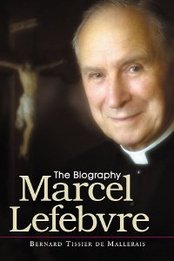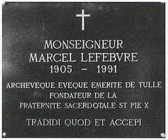St Walburga received a solidly Christian upbringing. The family said their daily prayers before a wooden cross that was erected on their land and, in 720, she entered the double monastery at Wimborne (Dorset). Under the direction of St Tatta, the abbey had gained a reputation of learning and holiness, and it would prepare Walburga for her missionary years in Germany. Around the same time, her father and two brothers embarked on a pilgrimage to Rome and the Holy Land. However, her father developed a fever and died at Lucca, where he is venerated to this day as ‘St Richard the Pilgrim’ at the church of San Frediano. The brothers went on to Rome, where they split up – Winnebald joined a Benedictine monastery and Willibald travelled to the Holy Land.
During this period St Boniface was busy consolidating the Church in Germany, establishing monasteries and bishoprics. His collaborators included, by the 740s, SS Winnebald and Willibald. It is perhaps no surprise that in 750 St Walburga travelled to Germany to assist her kinsmen in this great work. It is said that, as she crossed the Channel, a terrible storm arose, which was stopped only by Walburga’s prayers - the miracle was traditionally commemorated at Eichstätt on 4th August. She may have stayed in Antwerp, where she is venerated as patroness, before going to Mainz to meet her uncle. She then settled down at Tauberbischofsheim, under St Lioba, a relative and another member of the Wimborne community, who had moved to Germany in 748.
It must have been a great joy to be near her brothers, after many years of separation, and Walburga eventually moved to Heidenheim, where Winnebald had founded a double monastery, based on the English model (as found at Wimborne). After his death in 761, Walburga’s surviving brother, Willibald, now bishop of Eichstätt, appointed her Abbess, with government over both the monks and nuns. She was also skilled in medicine and did much to look after the sick and dying.The legend contains various miracles worked during her life. One night, one of the monks refused to accompany the saint to her cell at night with a lit candle. Shortly afterwards, the nuns found the abbey illuminated by a mysterious light. The saint cried out: ‘O Lord, as a humble maid who committed my life to you since my youth, I thank you for granting this grace. You have honoured me in my unworthiness with the comfort of your light. This sign gives courage to the souls of your handmaids who are dependent on me. And you have driven out the darkness and our fear through the bright light of your mercy.’
When St Walburga died on 25th February 779, she was buried at Heidenheim. However, the double monastery did not survive long and under Willibald’s successor, Bishop Gerhoh, it was occupied by canons. Devotion to Walburga waned to such an extent that in 870, as workmen were restoring the church, the saint’s tomb was desecrated. The outraged saint appeared to the bishop, Otgar, complaining that her remains were being trampled upon ‘irreverently by the dirty feet of the builders.’ Shortly afterwards, the north wall of the church collapsed, which was widely interpreted as a sign from heaven. The body of Walburga was quickly exhumed and translated to Eichstätt on 21st September, and her cult was revived. A community of canonesses initially cared for the saint’s tomb, until a Benedictine Abbey of nuns was founded there in 1035, which survives to this day. During its long existence, the Abbey has founded many daughter-houses, including Minister Abbey in Kent and several across the Atlantic: Latrobe (Pennsylvania), Canyon City (Colorado), and Boulder (Colorado).
The fame of St Walburga rests in the miracles claimed after her death rather than the details of her life. When the tomb was opened in 893, ‘the workmen found the venerable bones of our holy mother Walburga moistened as if with a film of spring water, so that they were able, as it were, to press droplets of dew-like liquid from them.’ This ‘oil’ (Walburgisöl) has been constantly flowing from Walburga’s shrine, between the months of October and February, for over 1,200 years, stopping only, we are told, during a period when the town was under interdict and after blood was shed in the church by armed robbers. The fame of St Walburga rests in the miracles claimed after her death rather than the details of her life. When the tomb was opened in 893, ‘the workmen found the venerable bones of our holy mother Walburga moistened as if with a film of spring water, so that they were able, as it were, to press droplets of dew-like liquid from them.’ This ‘oil’ (Walburgisöl) has been constantly flowing from Walburga’s shrine, between the months of October and February, for over 1,200 years, stopping only, we are told, during a period when the town was under interdict and after blood was shed in the church by armed robbers.




